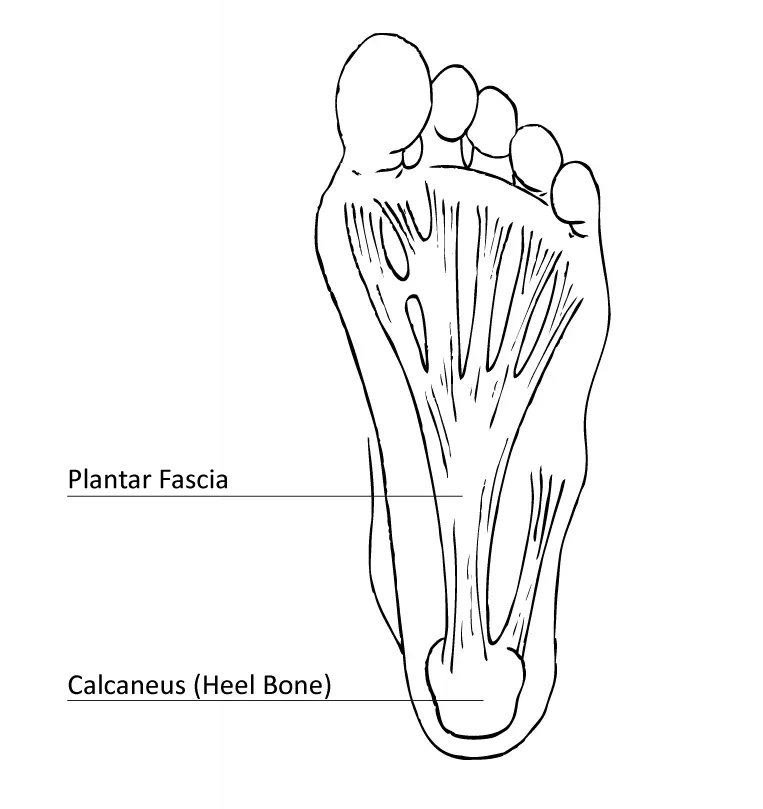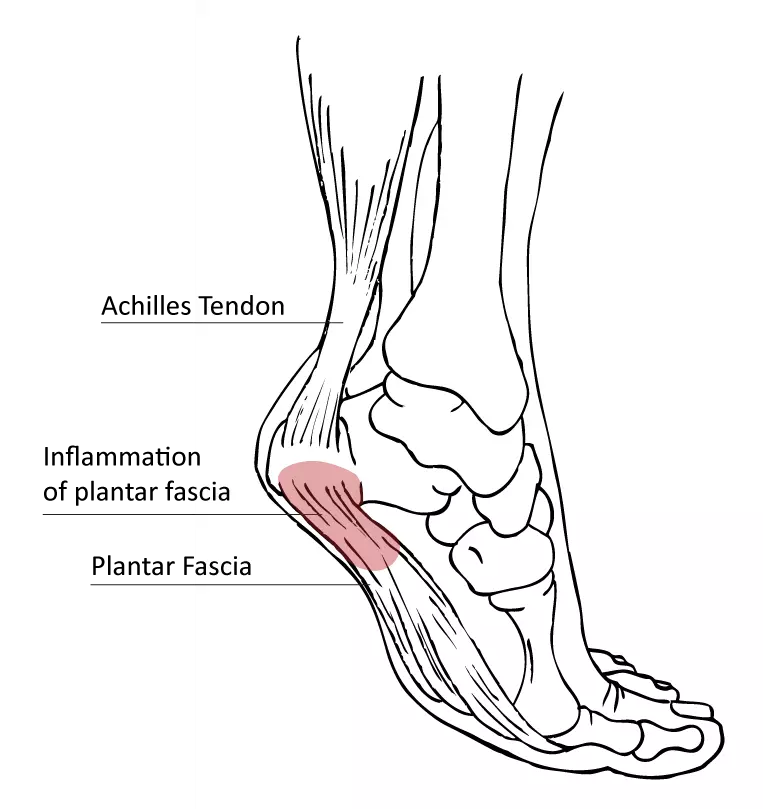- Home
- Education
- Patient Education
- Educational Materials
- Plantar Fasciitis FAQ's
Plantar Fasciitis FAQ's
What is plantar fasciitis?
Plantar fasciitis is a localized, degeneration of the plantar fascia, the tough, fibrous band of tissue that connects your heel bone to the base of your toes. The problem occurs at the site where the plantar fascia is attached to the bottom of the heel bone. It is the most common cause of heel pain, affecting more than three million people every year according to statistics. In our practice's experience, we've found its frequency is similar to those who suffer from lower back pain, which could mean many more people are suffering from the condition.
Who does Plantar Fasciitis affect?
All foot types are prone to plantar fasciitis, including folks with high arches and those with what we call flat feet. The condition is common in middle-aged and older patients. It is also common in patients who walk or stand on hard surfaces a lot. It disproportionately affects those who are overweight.
What are the types of plantar fasciitis?
There are two types of plantar fasciitis — acute and chronic.
- Acute: The condition can be triggered by a specific injury, this is also called an acute type.
- Chronic: There is also a chronic type also known as the classic case of plantar fasciitis which becomes worse over time.
What are the symptoms of plantar fasciitis?
Common symptoms include mild pain on the bottom of the heel, especially when taking your first steps of the day. Often, symptoms improve only to worsen later in the day. This happens due to over-stressing of the plantar fascia causing a chronic healing response at the attachment to the bone that may remain sore for months.
What causes plantar fasciitis?
Like many degenerative conditions, it is caused by wear and tear of the fibers of the fascia. One of the most common causes, is a strain to the tissue due to a specific activity combined with improper or inadequate flexibility of the Achilles tendon and the calf muscle. Other causes include a pinched nerve in the heel region, thinning of the heel fat pad, or a stress fracture of the heel bone.
When should you see a doctor?
If the pain was caused by a specific episode or injury, and doesn’t improve within a week of resting and icing the area, you should seek medical help. Since most cases are chronic, and the pain appears gradually and begins to worse over time, see an orthopedic foot and ankle specialist when your quality of life begins to suffer despite taking time to rest, stretch and ice the area. The orthopedic foot and ankle specialist will take a history of your symptoms and your past medical conditions, examine your foot and leg and take an x-ray to rule out any other possible causes for the pain.
What is the course of treatment?
In general, our practice firmly recommends noninvasive treatment for majority of patients with plantar fasciitis. Stretching is by far the best therapy to relieve the painful symptoms without damaging the integrity of the plantar fascia. We offer simple, corrective stretches to loosen up the calf muscle, the Achilles tendon and of course the plantar fascia itself.
A simple stretch that can be done at your desk involves folding one foot over the opposite knee with your toes flexed back towards you in a figure four formation. Another is the yoga pose called downward dog. The classic runner’s stretch also helps stretch the lower leg and bottom of the foot. More stretches can be found here.
Anti-inflammatory medication such as Naprosyn or Ibuprofen may also help reduce pain and inflammation. Cushioned soled shoes, heel cups, and soft orthotics are useful in alleviating symptoms.
If the condition doesn’t improve after 12 weeks, we may suggest a corticosteroid shot. But, beware that having multiple injections may weaken the fibers of the fascia even more. Other interventions such as a night splint or shock wave therapy may also help.
As a practice, we do not explore surgery for plantar fasciitis unless noninvasive treatments have failed, but statistics show that about 5 in 100 sufferers may be candidates.
How can I prevent plantar fasciitis?
Take good care of your feet. Wear shoes with good arch support and heel cushioning. If you work on hard surfaces, stand on a thick rubber mat to reduce stress on your feet. Make sure that you stretch daily whether you are an athlete or not. Stay at a healthy weight to reduce the load on your feet. Visit the American Orthopedic Foot and Ankle Society website for more information on how to prevent and treat this common condition.